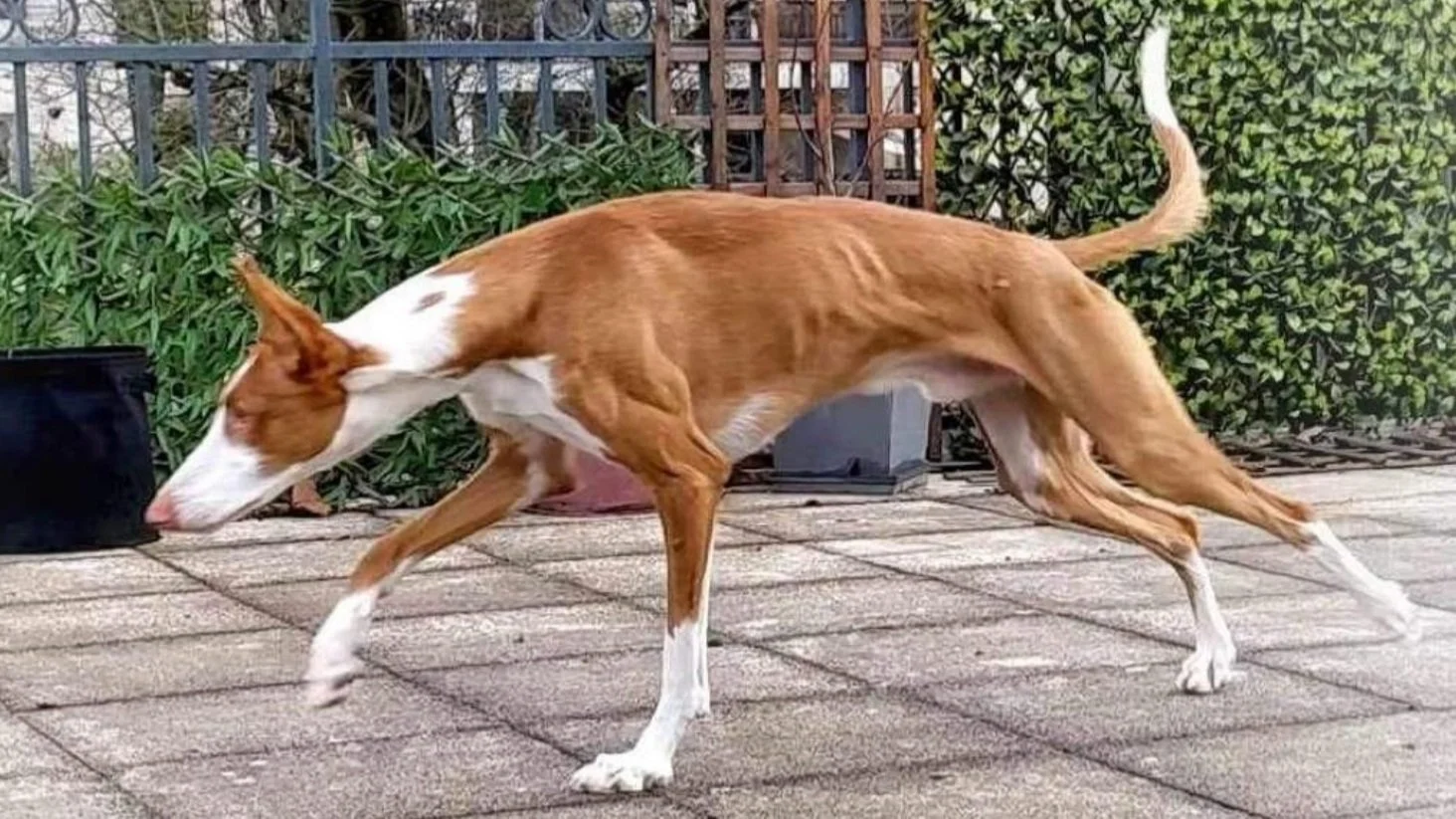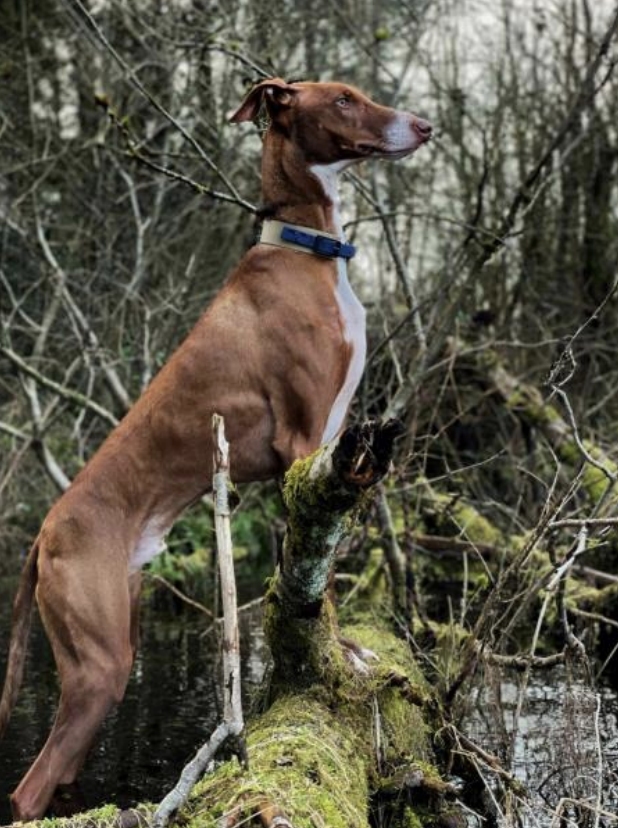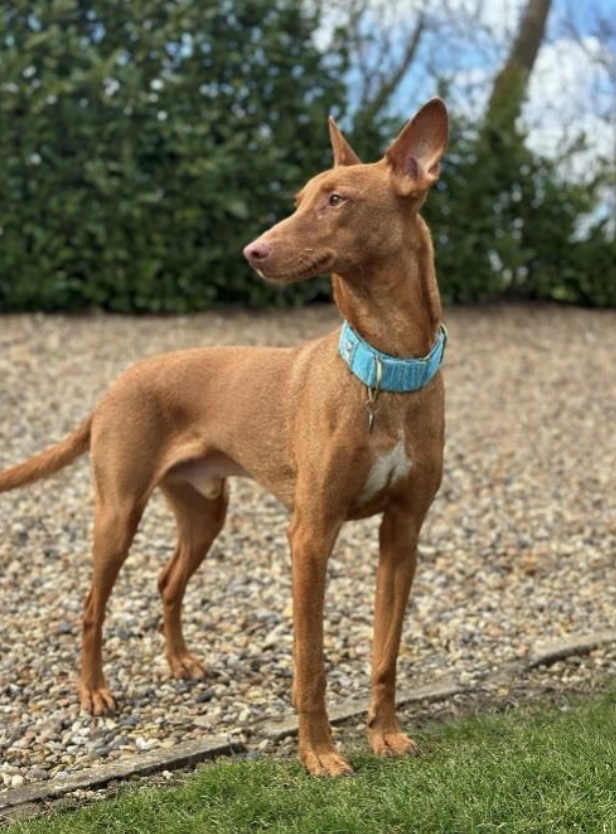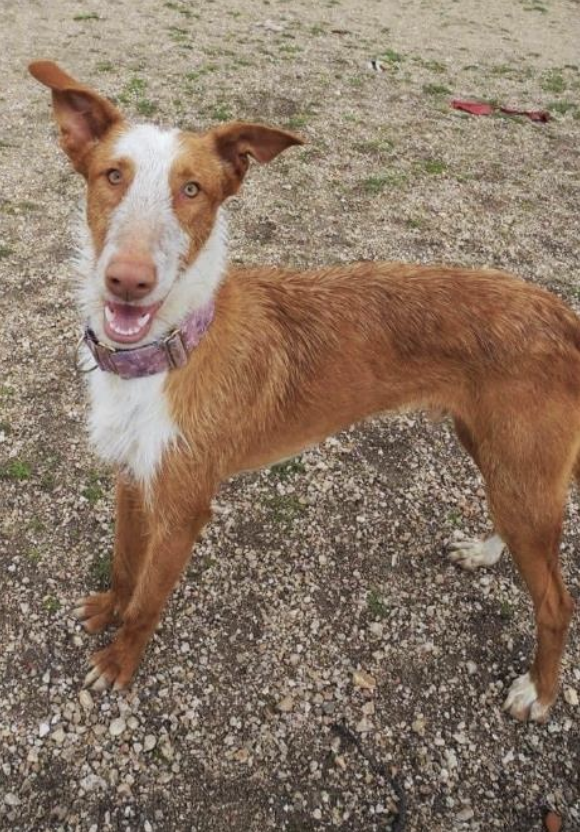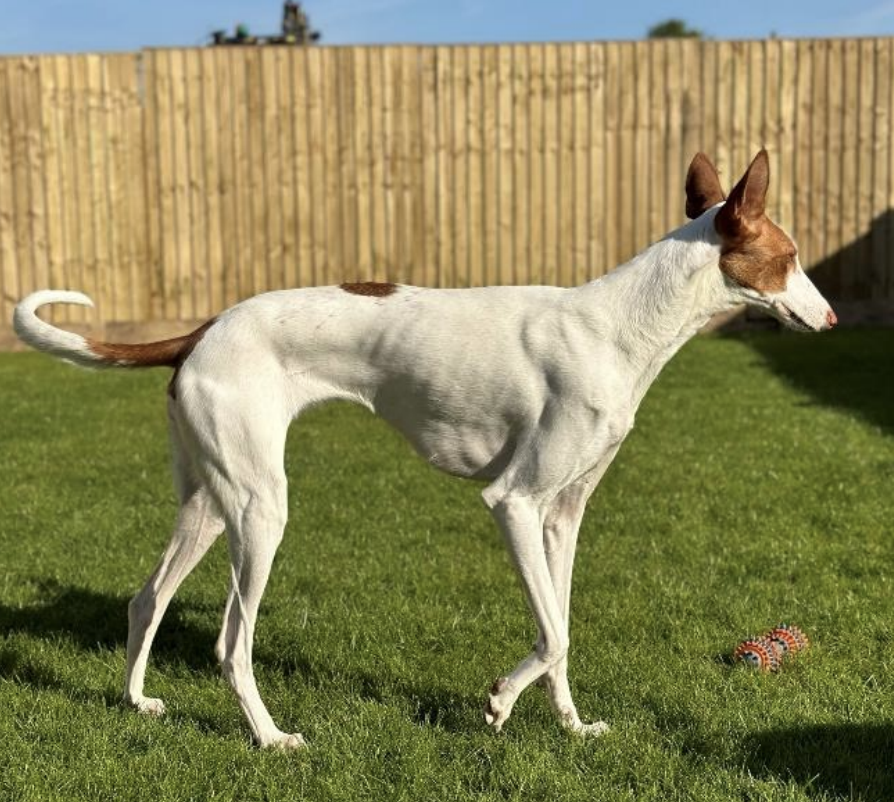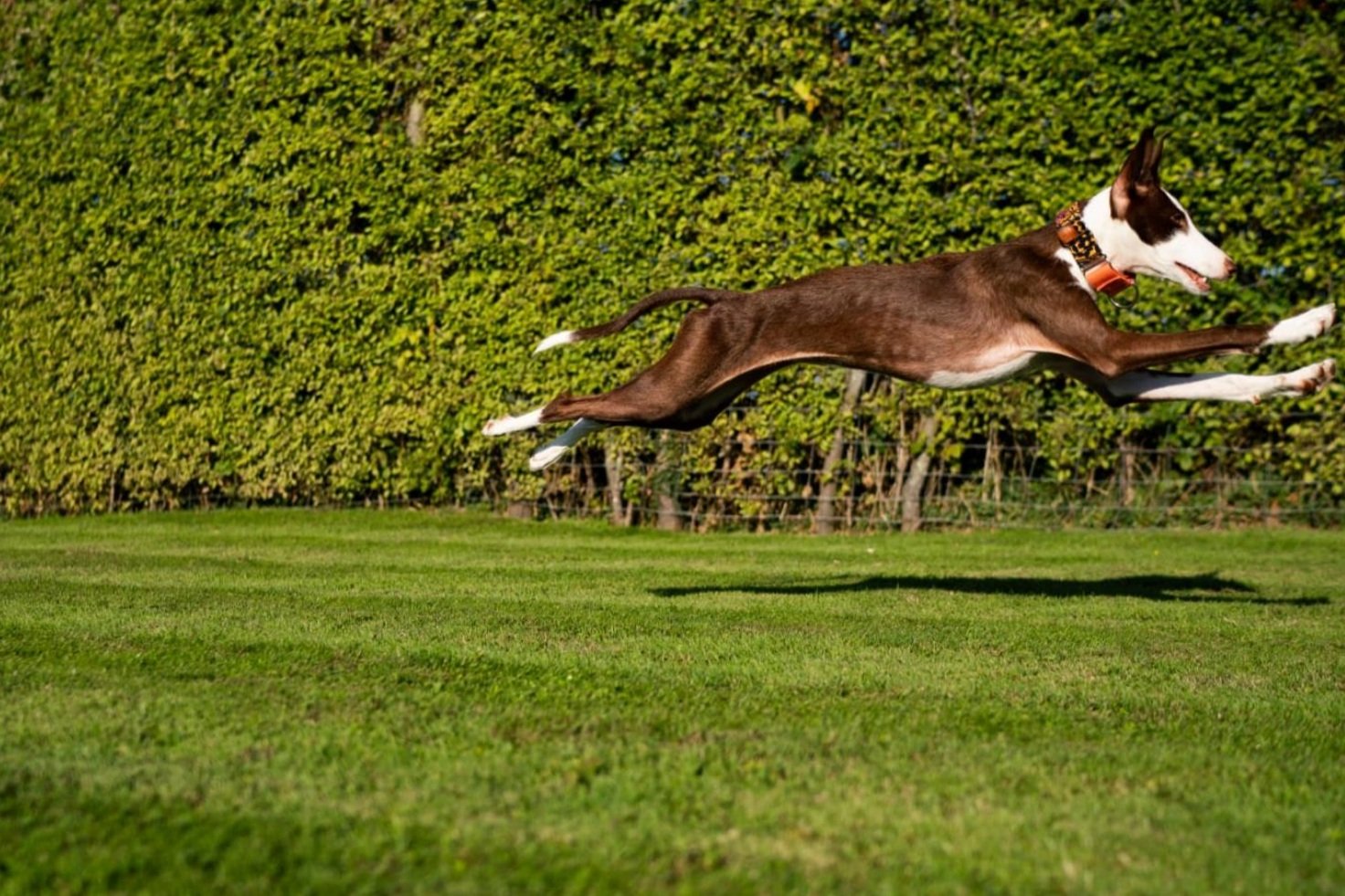Podenco Health - Managing your pods weight!
A healthy happy Podenco having a play!
Over the next couple of months we’ll be writing a series of blog posts to talk ‘Podenco health’ and how you can help keep your pod in tip top condition. Generally speaking, Podencos are quite a hardy breed, who don’t tend to have too many health problems, but as with everything it does depend on the individual dog and nothing is ever guaranteed. Every month, we’ll cover a different topic to bear in mind and watch out for. Starting with a super easy, but often overlooked one - keeping an eye on their weight!
One of the most important things you can do for your Podenco (and any dog!) is help them to maintain a healthy weight. We know it can be heartbreaking to see how underweight some pods are when they are first rescued, and we all know how masterful they are at giving you the ‘I’m so hungry, please feed me’ eyes, but if you do one thing for your pod’s health, not letting them carry any additional, unnecessary weight, should be it. Sadly, the UK is facing a pet obesity epidemic and this is the case across the globe. A PDSA report highlighted that vets estimate that 46% of dogs are overweight and other published studies say this could be as high as 65%. Because we’re becoming so used to seeing overweight dogs, it can be difficult to spot when our own aren’t within a healthy range. Read on for some tips.
Firstly, weighing a Podenco doesn’t really help determine if they are over or underweight as they are all different and can range from 5kg up to 40kg! So don’t be tempted to try and search for a weight range online, or ask other people about their pods so you can compare yours. Instead, you need to judge by looking at them. Podencos are an athletic breed with flat muscle structure for endurance, unlike a greyhound that can have bigger more bulging, obvious muscles, more suited to a sprinter (think of the build of a marathon runner vs a 100m sprinter). This means pods should look lean and lithe, with a tucked waist, the shadow of at least the last few ribs showing (on rough coats this might be more tricky but you should be able to feel the ribs very easily) and often, depending on their conformation, hip bones and spine slightly protruding. From above, you should be able to see their waist very clearly. Unfortunately many standard dog body condition charts will say that visible bones mean your dog is underweight, but bear in mind that these charts don’t take into account the many different breeds in one illustration and instead provide general advice that is suitable for most dogs, but we all know that Podencos aren’t like most dogs, and are special in so many ways.
Pods come in all different shapes and sizes – above are some examples of Podencos at a healthy weight. On rough coated pods, you won’t necessarily see ribs but you should be able to see that they are nice and lean with a visible tuck and you should be able to feel their ribs easily.
Of course, with the variety of crosses, this is general advice - if you are ever concerned about your pods weight, please do send us a few photos from above and from the side and we can help you with what to look for. And remember, UK vets don’t always know the breed and might even suggest your dog is slightly underweight (based on their standard charts mentioned above) if they are comparing them to other more common sighthounds like greyhounds and whippets. Other people you meet on walks might also pass comment about your dog needing to put on a few pounds, but remember, they don’t know your dog, you do! They may not even know sighthounds let alone Podencos, so please don’t take any notice.
Malnourished dog (left) vs healthy dog (right).
Malnourished dog – hip bones severely protruding, all ribs heavily visible, very little muscle tone.
Healthy dog – hip bones only slightly visible, shadow of ribs visible, great muscle tone.
When you know what you are looking for, it’s easy tell the difference between an underweight malnourished dog and healthy Podenco that will have good muscle tone and look healthy and strong. So don’t let any unwelcome comments from others lead to overfeeding. It really is one of the worst things you can do for you dog and is literally killing them with kindness. Their internal organs and frames aren’t designed to carry even a small amount of extra weight and it can lead to many serious health problems and can, at its worst, cut their lives short by up to as much as 2.5 years (Study details here).
Some pods can be very greedy and will try their best to snaffle anything they can, so keep an eye on them, any excess far around the neck, base of the tail or belly, lack of a waist tuck, or lack of visible ribs may indicate a change in diet is required.
Before and After. Pumpkin was quite badly overweight when he was first adopted, with excess fat covering his hips, around his belly, over his ribs and round his neck as you can see in the first photo. He’s been on a long journey and still isn’t quite there yet but has had a huge improvement, with much more of a tuck, less visible fat and increased muscle tone.
If your dog is overweight, you’ll need to manage their weight loss slowly, cutting food/treat portions and upping exercise slowly, but please consult your vet if in any doubt about how best to approach it. Equally, if a weight loss routine isn’t working, or your dog has put on weight without any change to their diet or exercise, always consult your vet for advice and their may be an underlying heath condition that is having an impact.
If you just need to help them cut back a litte, below are a few pointers and things to think about.
If you cut back their food and notice they seem hungry, you can bulk out meals with leafy green veg lightly steamed to help them feel fuller for longer.
Slow feeders also help meals last a bit longer and help them to digest it properly.
Buy the smallest training treats possible or break semi moist ones in half so you can still use the same number when training but cut the calories in half.
Snacks like cucumber, apple and broccoli can also be great, low fat options and many have additional health benefits.
Keep an eye on the quality of their food - take a look at All About Dog Food to see how your food ranks and pick the best available for your budget. We would also advise against free feeding (having bowls of food constantly out) as it’s difficult to keep an eye on amounts they are consuming and will often lead to them overeating.
Don’t forget to include treats in food quotas and take ‘recommended serving sizes’ with a pinch of salt - it will depend on individual metabolisms and how active they are as to how much they need to eat to maintain a healthy weight. You might need to adjust up or down to find the right amount for your pod.
Keep in mind that dogs that have been spayed or neutered are often more likely to put on weight.
Exercise is also important to keep your dog fit - whilst as mentioned earlier they don’t build muscle like greyhounds; they should still have some muscle tone. No need to overdo it on the exercise front (we’ll cover that in a future blog!) them but a good run every now and again (in a secure field if they don’t have recall) can help them engage and build muscles they don’t necessarily use on walks.
A fit Podenco exercising. When exercising your Podencos, you should be able to see their muscles working and will often see even more ribs as they move.
In summary, once you know what to look out for, it’s easy to spot the signs of an overweight Podenco and particularly if you catch it early, its easy to reverse these signs with no lasting affect on their health. Our final bit of advice is if in doubt, a tad underweight is much better than an ounce overweight for the long term health of your pod.
And remember, if you are ever unsure about the health of your pod you should reach out to your vet - sudden excessive weight gain or weight loss is a serious matter that needs a little more than our blog skills!
With much love! The HFP team xxx
Article written by Gemma Eley
If you would like to adopt a Podenco you can see our available dogs here!

